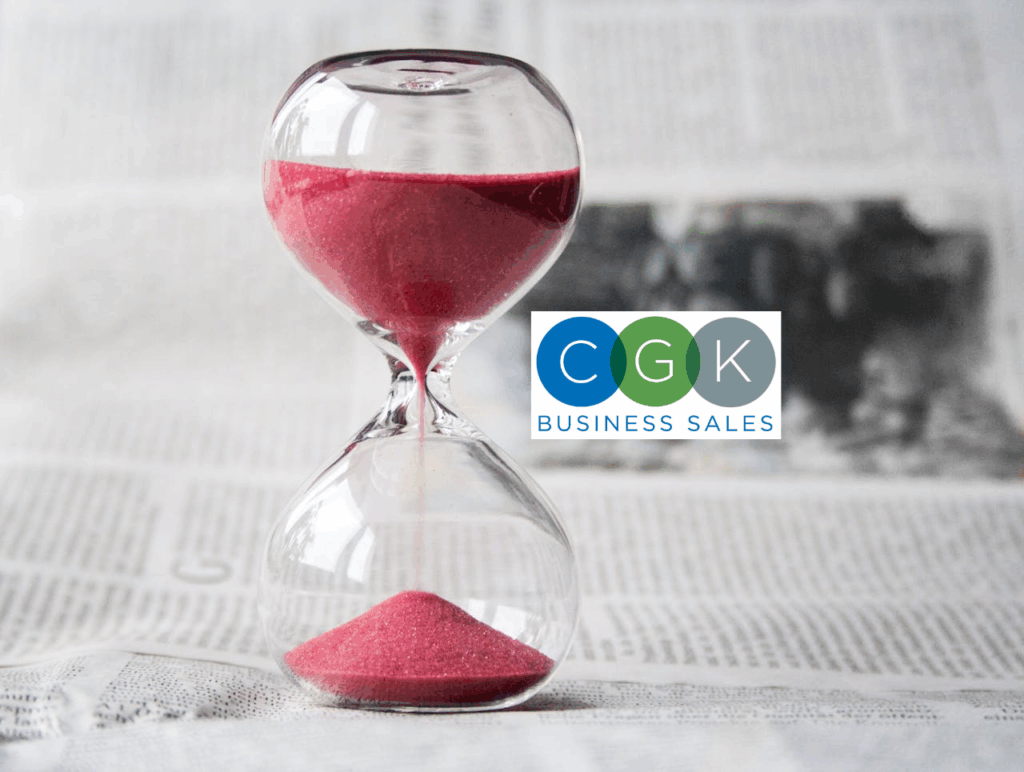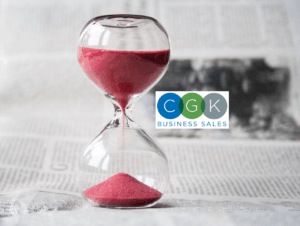In the world of business exits, timing isn’t just a factor, it can be the difference between an excellent deal and a mediocre one. For small and lower-middle-market business owners, understanding market timing when selling a business means aligning your readiness with market conditions to maximize value, not simply waiting for “the right time.”
Why Timing Matters More Than Most Owners Realize
When you’re preparing to sell your business, you naturally focus on your internal metrics: profitability, customer retention, growth, and organizational strength. However, those factors alone don’t determine what a buyer is willing to pay. The external environment plays a powerful role in valuation and deal outcomes, and that’s where market timing when selling a business becomes critical.
High interest rates, tight credit markets, and subdued buyer activity can compress multiples, slow deal timelines, and reduce bargaining power. Conversely, when interest rates begin to drop, credit becomes more accessible, buyer demand increases, and valuation floors rise. In short, even a very good business can sell for less if the market conditions aren’t favorable and the reverse is also true: a solid business sold during an up-cycle may command a premium.
For small and lower-middle-market companies, this is especially relevant. Many in this segment rely on financing to complete transactions, and buyers have fewer “cheap money” options when rates climb. That means your business’s value is not just about what you’ve built, it’s also about where the market is when you go to exit.
Understanding Market Cycles in M&A
To grasp market timing when selling a business, you must understand how cycles affect buyer behavior and pricing. Deal activity in the M&A market is driven by three core inputs: cost of capital, availability of financing, and buyer confidence. When interest rates fall, all three tend to improve.
For example, a recent industry study shows that when the Federal Reserve begins cutting rates, transaction ease increases, valuations climb, and financing becomes more favorable. That signal often marks the start of an up-cycle in dealmaking. In practical terms: if buyers can borrow more easily, they can pay more.
In the small-business arena, that means your timing window may open sooner than large-corporate segments. Lower middle-market companies typically require less debt, rely more on cash flow, and attract both strategic and financial buyers once market conditions improve. Recognizing that you’re entering a favorable phase, and not just waiting for ideal internal metrics, will give you a strategic edge.
Moreover, cycles are rarely linear. Many believe you should wait for “perfect conditions,” but in reality the prime window for market timing when selling a business often closes as buyer demand peaks and seller supply catches up. Being ready before conditions shift can be just as important as picking the right moment itself.
The Role of Liquidity in the Private Market
Another major driver of market timing when selling a business is the availability of capital, especially in the private markets. Even when a buyer likes a company, a deal can only close if financing is attainable on acceptable terms. During high-rate environments, lenders tighten underwriting standards, require more collateral, and reduce loan-to-value thresholds. That limits new buyers and suppresses pricing power.
But when rates begin to fall, institutional liquidity tends to return to the lower-middle-market faster than many owners expect. Private equity firms, family offices, and high-net-worth investors are already sitting on large reserves of “dry powder”, which is capital that must be deployed. When the Fed signals a reduction in the cost of borrowing, these buyers move more aggressively because they know they can finance deals at better terms.
This is why a shifting interest rate environment can mark the beginning of a new deal cycle. Even modest easing by the Fed increases buying power and expands the pool of active acquirers. When more buyers are at the table, especially those with significant capital to deploy, it dramatically improves seller leverage.
Why Good Businesses Still Sell for Less in Down Markets
Many business owners assume, “If my numbers are strong, I’ll get a strong valuation regardless of timing.” Unfortunately, that simply isn’t how buyers price risk.
Even a well-run company with stable earnings can sell for significantly less when market sentiment is cautious. That’s because buyers don’t just evaluate current cash flow, they evaluate future reliability and the ability to finance the purchase. If the macroenvironment introduces uncertainty, they build a valuation discount into their offers.
Two identical businesses can sell at very different prices depending purely on external conditions:
- In a risk-off environment → multiples compress
- In a risk-on environment → multiples expand
This is why market timing when selling a business matters so much. Valuation is not just a company-by-company calculation, it is a function of the broader buying environment. Sellers who wait for “internal perfection” sometimes miss the external window that would have delivered a stronger result.
How Waiting Too Long Can Backfire
There is a natural psychological trap many owners fall into: “I’ll wait until things are even better.” But M&A cycles don’t announce their peaks. Most owners only realize they missed the top after financing has tightened or demand has cooled.
It’s common for sellers to think that waiting another year or two will automatically produce a better outcome, especially if revenues are still trending upward. But this can easily backfire if buyer appetite begins to taper just as you enter the market. By the time an owner feels “ready,” the market may have already shifted.
A better approach is readiness + opportunity. If you are prepared to sell and the macroenvironment is improving, particularly in a newly forming up-cycle, that combination usually produces the strongest outcomes. Owners who approach timing as a strategy, not an accident, consistently outperform those who rely on instinct or emotion.
How Strategic Buyers Respond to Timing
Another overlooked piece of market timing when selling a business is how strategic buyers behave across cycles. When capital is cheap and expansion feels less risky, strategic acquirers are more aggressive. They are willing to stretch on valuation if the deal offers market share, synergy gains, or geographic expansion advantages.
However, when the market tightens, many strategics revert to a “replacement cost mindset”, i.e., “What would it cost us to build this ourselves?” rather than “What is this business worth as a going concern?” In that mindset, they undervalue intangibles like goodwill, brand equity, and embedded workforce expertise.
When capital becomes accessible again, like during the early stages of a rate-cutting environment, strategic buyers tend to re-engage before valuation inflation spreads widely across the market. That early resurgence is often where the best strategic premiums are found.
This is why early-cycle positioning can matter more than late-cycle enthusiasm.
Why Early Preparation Creates Timing Advantage
A key takeaway for owners is that you don’t get to choose when the market improves, but you do get to choose whether you are ready when it does. The mistake many owners make is waiting until conditions appear ideal to start preparing. By then, the market may already have shifted.
The real advantage goes to those who prepare before the ideal window opens. If you have clean financials, documented processes, a leadership structure buyers can trust, and a story of sustainable earnings, you are able to move quickly when capital loosens and demand rises.
And right now, with interest rates beginning to trend downward and private capital eager to re-enter the market, small and lower-middle-market sellers may be entering the early innings of a favorable up-cycle. Timing advantage belongs to those who are prepared on the front end, not those who scramble after momentum has already peaked.
How CGK Business Sales Helps Convert Timing Into Value
Even when market conditions are improving, most sellers don’t benefit purely by being in the right place at the right time, they benefit by pairing timing with process. A favorable market only matters if you know how to create buyer competition, structure terms correctly, and extract the full premium buyers are willing to pay.
That’s where CGK Business Sales adds leverage.
Our process is built around matching the right window of opportunity with the right buyer pool and not simply “finding a buyer” but bringing multiple qualified buyers to the table at once. That competitive environment is what transforms timing into valuation power. When buyers know they are competing, they stretch both on price and deal structure.
We also know how to speak the language of both strategic and financial buyers, which matters enormously when capital availability improves. Strategics care about synergies and market position; financial buyers care about cash flow durability and growth potential. A professionally run process aligns your strengths with the motivations of each buyer type, something DIY sellers or inexperienced advisors cannot replicate.
Most importantly, CGK helps sellers enter the market prepared, so that when timing shifts in your favor, you are able to accelerate instead of playing catch-up. In an improving credit environment, speed and readiness can be the deciding factors between a good outcome and a great one.
Positioning Your Business for the Next Window of Opportunity
The early stages of a rate-cutting cycle are often when the best deals occur, before valuations fully normalize and before a rush of competing sellers enters the market. Owners who prepare now are ideally positioned to take advantage of the emerging up-cycle instead of chasing it after momentum peaks.
The most successful exits happen when preparation meets opportunity. Market timing when selling a business is not about predicting the perfect moment, it’s about being ready before that moment arrives.
If you plan to transition within the next one to three years, now is the time to evaluate whether your business is positioned to capture renewed buyer enthusiasm, stronger multiples, and easier access to capital. Those who move early capture the upside. Those who delay may find themselves negotiating in a more crowded seller environment.
With the credit markets loosening and buyer confidence rising again, this may be one of the best windows lower-middle-market owners have seen in several years. The sellers who prepare now will be first in line to benefit.


